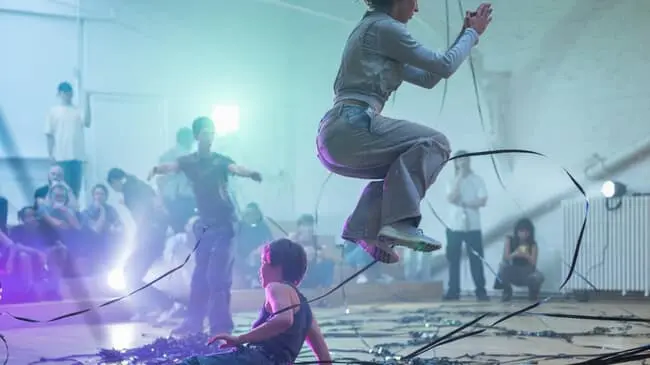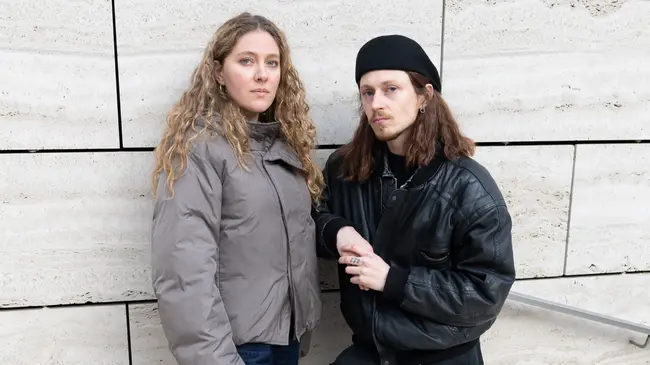My main idea is to create a pause in the cycle

Luca Vanello was already working with existing objects when, by coincidence, a leaf fell into a mix he had for another process. The next day, the leaf became transparent and that’s how his journey working with plants started. Over the years, as the idea of exploring our relations to materials stayed, working with plants became predominant. From 15 September until 2 October, he and Ilke Cop are having an exhibition to close their residency in the old firehouse, Barak Lili M, a place where Pilar caters over eighty projects.
Hi Luca, how are you? How’s the residence going?
Good! We’re at the end now and I’m trying out some stuff now. I’ve mostly focused on producing work the past year. I was also doing a residency at Verbeke foundation, where my exhibition now takes place in a greenhouse. During my residency there, I focused on making the plants to what they are, the messier part. Here I could bring all the disciplines together and work on creating compositions. Seeing the vulnerability became more like a starting point for something new to grow.
What has working with plants taught you?
I work with plants that are not alive, so it’s quite different. There’s the assumption that working with plants gives a feeling of fragility and vulnerability. But something I learned is that they are not as vulnerable as we may think. Usually, we associate vulnerability with something that is finished when we break it, almost like a weakness that needs to be hidden or fixed. Working with plants taught me that it’s the opposite. Seeing the vulnerability became more like a starting point for something new to grow. These plants need a lot of care to maintain and keep in shape. For example, I treat them with an oil that keeps them soft. Sometimes they break in big installations; in the beginning, I really suffered when it happened, but now it’s become an opportunity to recombine them in different shapes. So that’s something I learned: their vulnerability is a point of growth rather than a problem to be fixed.
Your work is interspersed with natural and artificial materials. How do you let them speak together?
The idea of working with both kinds of materials is to find a way through the composition, finding almost a dialogue where the line between what is artificial and what is not is blurred. In that sense, you could see the work as a kind of thinking towards new ways of being together. The world we live in and the crises we face push us to think in other directions. It’s more about trying to look at materials in a different way and reconsidering certain notions. For example, care has the connotation that it has to do with love, but there’s also a violent aspect to care. How do we decide who is worthy of care and who isn’t?
At the end of an exhibition, the floor is always filled with little leaves
Is the process you go through caring for these plants and giving them a second life?
Sometimes some people say they feel like I’m mummifying these plants. But for me, that’s not the main idea. Although there are plants here that I have had for years, my main idea is to create a pause in the cycle.
At the end of an exhibition, the floor is always filled with little leaves. Instead of throwing them away, I started collecting them and making small compositions. It’s made with the same logic; I like the idea of trying to make something out of anything. It creates a new life, a new form every time.
What are your plans after this residence?
I started to work as a researcher at the university. It’s new for me and quite stimulating because it’s such a different context. I’m eager to see how my work will evolve in the greenhouse at Verbeke foundation. It's going to be there for one year, so plants will be growing around it and so on. This will be the first time for me where I can work on something by adding elements and bringing new materials. My work is already a lot about cycles of materials, but this time I can make it more visual. More evident also for who’s watching. It will be interesting to compare my exhibition there, in the greenhouse, and here, in the studio. I want to document the changing surroundings and track the response of the audience, almost as if it were a study. The interesting part is that the greenhouse is like a space where the idea is to control and simulate the weather. But as with almost everything, you must be open to the fact that you don’t know what happens all the time because it has its own life.
Different Class works with the interest of their community at heart.
Our work’s purpose is to foster a solid network for independent artists, those who love them, and those who want to support them. Become a member to contribute to the local Belgian art scene.






